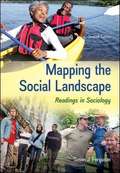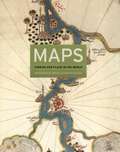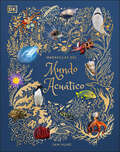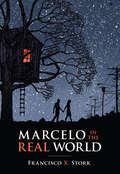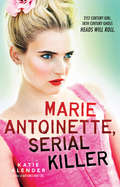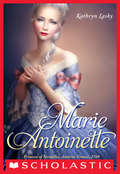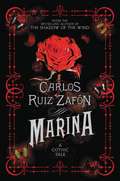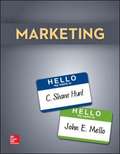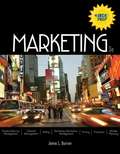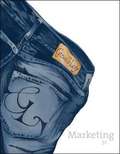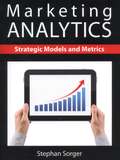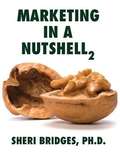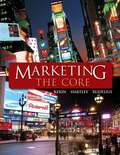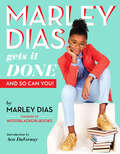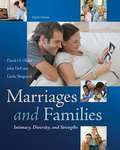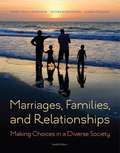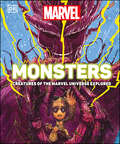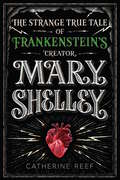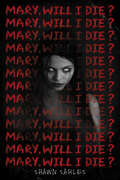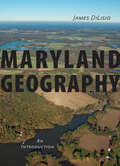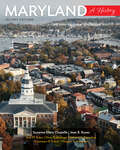- Table View
- List View
Mapping the Social Landscape: Readings in Sociology
by Susan J. FergusonThis best-selling anthology providesexcellent coverage of key concepts in sociologyincluding culture, socialization, deviance, social structure, social institutions, and social inequality. Drawing from awide selection of classic and contemporary works,the 58 selections represent a plurality of voices and views within sociology. Students will be introduced tocutting edge scholarship and perspectivesthrough classical readings from great thinkers like C. Wright Mills, Karl Marx, Howard Becker, and Max Weber and contemporary articles on current issues like gender socialization, healthcare reform, and minorities in the power elite. By integrating issues of diversity throughout the book,Ferguson helps students see the interrelationships between race-ethnicity, social class, and gender, as well as how these relationships have shaped the experiences of all people in society. Each selection is preceded by a brief introduction that highlights the key sociological concepts for students consider as they read.
Maps: Finding Our Place in the World
by James R. Akerman Robert W. Karrow Jr.In today's world where location, direction, and guidance are essential components of our daily lifestyle, digital maps are transforming the way we use such information and helping us find our way to people, places, and opportunities more easily and safely than ever before.
Maravillas del mundo acuático (DK Children's Anthologies)
by Sam HumeDesde el océano más ancho y profundo hasta el charco más pequeño, este hermoso álbum lleva a los niños lectores por un viaje fascinante a través del mundo acuático, en el que conocerán animales increíbles, plantas ingeniosas y mucho más. Impresionantes fotografías y hermosas ilustraciones complementan las descripciones de cada forma de vida, con las que los niños descubrirán cientos de datos interesantes mientras leen. ¿Sabías que los elefantes marinos pueden contener la respiración bajo el agua durante más de una hora, o que la planta acuática Victoria Cruiziana puede soportar el peso de un adulto, o que el reptil basílisco (teterete) puede correr sobre el agua?Descubre la ciencia de cómo las plantas han aprendido a vivir, alimentarse y respirar en el agua y echa un vistazo a los desafíos únicos de los diferentes ecosistemas, las características de los ríos, lagos, humedales y más. Contiene un índice visual lleno de información de referencia, con el tamaño y hábitat de cada especie.Con una elegante cinta marcapáginas y detalles dorados en la portada y en los bordes, 'Maravillas del mundo acuático' es un regalo atractivo para cualquier niño que le encante el mundo natural, ideal para que los más pequeños exploren por sí mismos o para leer cuentos a la hora de acostarse. Desde tiburones y peces vela hasta juncos y escarabajos, hay algo para todos en esta celebración de todas las cosas acuáticas.From the deepest, widest ocean to the tiniest puddle, this beautiful compendium takes young readers on an enthralling journey through the aquatic world, meeting amazing animals, ingenious plants, and much more along the way. Stunning photography and gorgeous illustrations complement storybook descriptions about each lifeform, and children can uncover hundreds of fascinating facts as they read. Did you know that elephant seals that can hold their breath underwater for more than an hour, or that the Victoria Amazonica water lily can support the weight of an adult, or that the brown basilisk reptile can run across water?Discover the science of how plants have learned to live, feed, and breathe in water, and take a look at the unique challenges of distinct ecosystems on feature spreads about rivers, lakes, wetlands, and more. There&’s also a visual index, packed with reference information including the size and location of each species.With foil on the cover, gilded edges, and a ribbon for keeping your place, 'Maravillas del mundo acuático' makes an attractive gift for any child who can&’t get enough of the natural world – and it&’s perfect for young readers to explore by themselves or for bedtime stories. From sharks and sailfish, to bulrushes and beetles, there&’s something for everyone in this celebration of all things aquatic.
Marcelo in the Real World
by Francisco X. StorkImagine Curious Incident of the Dog . . . with a romance, and you have the beginnings of this story of a young man struggling with the world outside his head--and the woman who gets inside it.The term "cognitive disorder" implies there is something wrong with the way I think or the way I perceive reality. I perceive reality just fine. Sometimes I perceive more of reality than others.Marcelo Sandoval hears music that nobody else can hear - part of an autism-like condition that no doctor has been able to identify. But his father has never fully believed in the music or Marcelo's differences, and he challenges Marcelo to work in the mailroom of his law firm for the summer . . . to join "the real world."There Marcelo meets Jasmine, his beautiful and surprising coworker, and Wendell, the son of another partner in the firm. He learns about competition and jealousy, anger and desire. But it's a picture he finds in a file - a picture of a girl with half a face - that truly connects him with the real world: its suffering, its injustice, and what he can do to fight.
Marie Antoinette, Serial Killer
by Katie AlenderHeads will roll!Paris, France: a city of fashion, chocolate croissants, and cute boys. Colette Iselin is thrilled be there for the first time, on her spring break class trip.But a series of gruesome murders are taking place around the city, putting everyone on edge. And as she tours the sights, Colette keeps seeing a strange vision: a pale woman in a ball gown and powdered wig, who looks like Marie Antoinette.Colette knows her status-obsessed friends won't believe her, so she seeks out the help of a charming French boy. Together, they discover that the murder victims areall descendants of people who ultimately brought about Marie Antoinette's beheading. The queen's ghost has been awakened, and now she's wreaking her bloodthirsty revenge.And Colette may just be one of those descendants . . . which means she might not make it out of this trip alive.Acclaimed author Katie Alender brings heart-stopping suspense to this story of betrayal, glamour, mystery, history--and one killer queen.
Marie Antoinette: Princess of Versailles, Austria-France, 1769 (The Royal Diaries)
by Kathryn LaskyNewbery Honor author Kathryn Lasky's MARIE ANTOINETTE is back in print with a gorgeous new package!To forge an incredibly powerful political alliance, thirteen-year-old Marie Antoinette of Austria is betrothed to Dauphin Louis Auguste, who will one day be the king of France. To prepare the princess for becoming queen, she must be trained to write, read, speak French, dress, act . . . even breathe. Things become more difficult for her when she is separated from her family and sent to the court of Versailles to meet her future husband. Opinionated and headstrong Marie Antoinette must find a way to fit in at the royal court, and get along with her fiance. The future of Austria and France falls upon her shoulders. But as she lives a luxurious life inside the palace gates, out on the streets the people of France face hunger and poverty. Through the pages of her diary, Marie captures the isolation, the lavish parties and gowns, her struggle to find her place, and the years leading up her ascendance of the throne . . . and a revolution.
Marina
by Carlos Ruiz Zafon"We all have a secret buried under lock and key in the attic of our soul. This is mine."When Fifteen-year-old Oscar Drai suddenly vanishes from his boarding school in Barcelona, no one knows his whereabouts for seven days and seven nights. His story begins when he meets the strange Marina while he's exploring an old quarter of the city. She leads Oscar to a cemetery, where they watch a macabre ritual that occurs on the last Sunday of each month. At exactly ten o'clock in the morning, a woman shrouded in a black velvet cloak descends from her carriage to place a single rose on an unmarked grave. When Oscar and Marina decide to follow her, they begin a journey that transports them to a forgotten postwar Barcelona--a world of aristocrats and actresses, inventors and tycoons--an reveals a dark secret that lies waiting in the mysterious labyrinth beneath the city streets. Carlos Ruiz Zafon's haunting Marina has long been a cult classic in Spain and is now an international bestseller.
Mark My Words: Native Women Mapping Our Nations
by Mishuana GoemanThe book argues that it is vital to refocus the efforts of Native nations beyond replicating settler models of territory, jurisdiction, and race. Through an examination of twentieth-century Native women’s poetry and prose, Goeman illuminates how these works can serve to remap settler geographies and center Native knowledges. She positions Native women as pivotal to how our nations, both tribal and nontribal, have been imagined and mapped, and how these women play an ongoing role in decolonization. In a strong and lucid voice, Goeman provides close readings of literary texts, including those of E. Pauline Johnson, Esther Belin, Joy Harjo, Leslie Marmon Silko, and Heid Erdrich. In addition, she places these works in the framework of U.S. and Canadian Indian law and policy. Her charting of women’s struggles to define themselves and their communities reveals the significant power in all of our stories.
Marketing
by Shane C. Hunt John E. MelloMarketing by C. Shane Hunt and John E. Mello was designed to demonstrate to students the connection between marketing and their future careers, whether students choose to pursue a major in marketing or another field. With a number of features to support this effort, including career tips in every chapter and a comprehensive marketing plan exercise that focuses on marketing the most important product in students' lives: themselves, Marketing is the most practical content available for the Principles of Marketing course. Supported by results-driven technology in McGraw-Hill's Connect Marketing and a focused table of contents covering all of the foundational topics in fourteen concise chapters, Marketing is the smart choice for instructors and students to adopt for the Principles of Marketing course.
Marketing (Third Edition)
by James L. BurrowMARKETING 3E is a revised edition that presents marketing as a set of skills and knowledge combined with economics, finance, and career planning to create strategic plans. Students learn the foundations and functions needed to successfully market goods, services, and ideas to consumers. Professional development, customer service, and technology are presented as keys to students' success. Increased emphasis on careers is also included with the incorporation of Career Clusters. While students study business, economics, selling, human relations, communications, distribution, promotion, product planning, and pricing, they also see marketing as a career choice.
Marketing 3rd Edition
by Dhruv Grewal Michael LevyGrewal/Levy was designed for today's changing student population. It has a strong emphasis on experiential learning and focuses on the value that marketers create for the firm. This textbook also provides students with hands-on learning tools through Connect Marketing, and provides professors up to date tools every month through the monthly newsletter. It has a strong emphasis on experiential learning and focuses on the value that marketer's create for the firm. In addition the authors have incorporated the theme of Entrepreneurship throughout the text, building on Babson's reputation as the top school for entrepreneurship in the country. As one of the shortest of the hardback books on the market Grewal also fits the changing needs of professors to present a more concise look at key marketing concepts.
Marketing Analytics: Strategic Models And Metrics
by Stephan SorgerMarketing Analytics: Strategic Models and Metrics offers marketing students and professionals a practical guide to strategic decision models and marketing metrics. The tools described in the book will aid marketers in making intelligent decisions to drive revenue and results in their organizations. The book contains a wealth of information on marketing analytics.
Marketing Theory (Second Edition)
by Michael Saren Michael J. BakerBuilding on the popularity of the first edition, published in 2000, the Second Edition brings together revised and new, original chapters from an outstanding team of contributors providing an authoritative overview of the theoretical foundations and current status of thinking on topics central to the discipline and practice of marketing.<P><P> Summary of key features: <P> - A marketing theory text written specifically for students<P> - Provides an introduction and overview of the role of theory in marketing<P> - Contributors are leading, well-established authorities in their fields<P> - Explains key concepts for students in a clear, readable and concise manner.<P> - Provides full, in-depth coverage of all topics, with recommended further readings<P>
Marketing Yourself
by Dorene CilettiA portfolio is a collection of work samples that represent your abilities and accomplishments. It can be used to demonstrate your work readiness, show your eligibility for admission to a college or other organization, or showcase a special talent.
Marketing in a Nutshell 2
by Sheri BridgesBriefly covers the basic essentials of marketing that business students would read and understand easily regardless of their majors.
Marketing: The Core (5th Edition)
by Roger A. Kerin Steven W. Hartley William RudeliusAn unique, innovative, and effective pedagogical approach based on 5 principles to catch up with the growth of marketing discipline, and the development of new instructional technologies.
Marley Dias Gets It Done: And So Can You!
by Marley DiasMarley Dias, the powerhouse girl-wonder who started the #1000blackgirlbooks campaign, speaks to kids about her passion for making our world a better place, and how to make their dreams come true!Marley Dias, the powerhouse girl-wonder who started the #1000blackgirlbooks campaign, speaks to kids about her passion for making our world a better place, and how to make their dreams come true!In this accessible guide with an introduction by Academy Award-nominated filmmaker Ava DuVernay, Marley Dias explores activism, social justice, volunteerism, equity and inclusion, and using social media for good. Drawing from her experience, Marley shows kids how they can galvanize their strengths to make positive changes in their communities, while getting support from parents, teachers, and friends to turn dreams into reality. Focusing on the importance of literacy and diversity, Marley offers suggestions on book selection, and delivers hands-on strategies for becoming a lifelong reader.
Marriages and Families: Changes, Choices and Constraints
by Nijole BenokraitisMarriages and Families: Changes, Choices, and Constraints, 8/e offers students a comprehensive introduction to many issues facing families in the twenty-first century. The author explores contemporary changes in families and their structure, impacts on the choices available to family members, and constraints that often limit our choices. This approach will help readers better understand the families in which they were raised and are forming themselves. With the most up-to-date material and emerging issues on family behavior, students will be able to make better decisions in their everyday lives.
Marriages and Families: Intimacy, Diversity, and Strengths
by David H. Olson John Defrain Linda SkograndSince the first edition in 1994, Marriages and Families: Intimacy, Diversity, and Strengths has helped thousands of college students learn how to create and maintain enduring intimate relationships. Three distinctive themes of intimacy, marital and family strengths, and diversity are woven throughout the text, with the goal of integrating research, theory, and practical ideas to promote healthy and productive relationships.
Marriages, Families, and Relationships: Making Choices in a Diverse Society
by Mary Ann Lamanna Agnes Riedmann Susan D. StewartThis best-selling text on marriages, families, and relationships combines an authoritative, yet applied approach with a theme that is especially relevant today: making choices in a diverse society. A balance of various theoretical perspectives along with many examples helps readers understand how people are influenced by the society around them, how social conditions change in ways that affect family life, the interplay between families and the larger society, and the family-related choices that individuals make throughout adulthood. Readers gain insightful perspectives on the diversity of our modern society, including different ethnic traditions and family forms, and are encouraged to question assumptions and reconcile conflicting ideas and values as they make informed choices in their own lives.
Marvel Monsters: Creatures Of The Marvel Universe Explored
by Kelly KnoxAll Super Heroes need a monster to fight, or a monstrous sidekick to help them. Some are even monsters themselves. This comprehensive field guide to Marvel flora, fauna, and beasts great and small shows off claws, teeth, tails, and wings in sumptuous, never-seen-before detail. From tyrannosaurus rexes from alternative worlds and genetically modified deinonychuses from the future to purple cat-sized dragons and swamp monsters, the Marvel multiverse is brimming with creatures both heroic and villainous. Explore swamps and the Savage Lands and more. Discover aerial beasts, artificially created creatures, and even monster team-ups. This anthology is a beautifully curated guide to the best and the worst and ensures you will never get Fin Fang Foom and Tim Boom Ba mixed up again! © 2021 MARVEL
Mary Shelley: The Strange True Tale of Frankenstein's Creator
by Catherine ReefOn the 200th anniversary of the publication of Frankenstein, comes a riveting biography of its author, Mary Shelley, whose life reads like a dark gothic novel, filled with scandal, death, drama, and one of the strangest love stories in literary history. The story of Frankenstein&’s creator is a strange, romantic, and tragic one, as deeply compelling as the novel itself. Mary ran away to Lake Geneva with the poet Percy Bysshe Shelley when she was just sixteen. It was there, during a cold and wet summer, that she first imagined her story about a mad scientist who brought a corpse back to life. Success soon followed for Mary, but also great tragedy and misfortune. Catherine Reef brings this passionate woman, brilliant writer, and forgotten feminist into crisp focus, detailing a life that was remarkable both before and after the publication of her iconic masterpiece. Includes index.
Mary, Will I Die?
by Shawn SarlesBestselling author Shawn Sarles' most terrifying YA horror yet . . .It starts innocently enough. Four kids - three girls, one boy - are at one of their houses, playing games. One of them has read about "Bloody Mary" and the idea that if you look into a mirror and say her name thirteen times, she will show you the future. Some legends say she'll show you your one true love or a skull to mark your death within five years. Others say that conjuring Bloody Mary will bring her into your world.Both sets of legends are true. The kids go through with the act, saying her name thirteen times. One girl looks in the mirror and sees her longtime crush. One girl looks in the mirror and sees the boy in the group. But she pretends to see something else. One girl looks in the mirror and sees a girl she's never seen before but can't get out of hermind. And the boy . . . he sees a skull. But he pretends to see something else. They try to laugh it off. And mostly they forget about it. Or at least they don't talk about it. Yes, over the next few years, whenever they look into a mirror, it's like there's always another figure standing in the background, getting closer.Just short of five years later, the four of them are no longer friends, having gone on separate paths. The girl whose house it was has always tried to avoid the mirror they used - because she always sensed someone in the background. One morning as she's passing by, she sees much more than her own reflection - it's a scary figure taunting her. She startles and breaks the mirror. When the pieces are put back together (barely), the figure is gone.That day in school, a new girl arrives. Her name is Mary . . . .
Maryland Geography: An Introduction
by James DiLisioA grand tour of Maryland’s geographic past through the lens of today’s landscape.When he first laid eyes on the countryside around Chesapeake Bay in 1608, records reveal, Captain John Smith exclaimed, "Heaven and earth seemed never to have agreed better to frame a place for man’s habitation." In Maryland Geography, James DiLisio—another admirer of the Free State—pays tribute to Maryland’s rich cultural, historical, and geographical heritage. This up-to-date, in-depth account interprets the contemporary environmental conditions of the "Marylandscape" by emphasizing its evolving political and socioeconomic contours.This closely researched volume, which is loaded with instructive charts and maps, is the result of DiLisio’s lifelong fascination with the geography of his adopted state and his thirty-five years teaching Maryland geography at Towson University. Arguing that regional geography is a product of both natural and human events, Maryland Geography provides an account of the vital geographical stage that the people of Maryland have created.DiLisio touches on Maryland’s pre-European American Indian heritage, post-colonial agriculture, and shifting industrial geography, as well as the degradation of the Chesapeake Bay and the rise of the modern economy. He considers the emergence of the isolated Eastern Shore; the rural tobacco land of southern Maryland; the rugged mining area of western Maryland; the prosperous, mixed farming area of the Piedmont; and the metropolitan Baltimore-Washington corridor. More than descriptive, the book examines major trends in the state—natural, economic, and demographic—in a way that prompts thinking about the consequences of growth and unbridled development. Aimed at college-level geography students, the book will also be of great interest to general readers, historians, politicians, and anyone involved in making policies relating to Maryland places.
Maryland: A History
by Jean H. Baker Suzanne Ellery Chapelle Jean B. Russo Constance B. Schulz Dean R. Esslinger Edward C. Papenfuse Gregory A. StiversonAn engaging and accessible introductory history of the people, places, culture, and politics that shaped Maryland.In 1634, two ships carrying a small group of settlers sailed into the Chesapeake Bay looking for a suitable place to dwell in the new colony of Maryland. The landscape confronting the pioneers bore no resemblance to their native country. They found no houses, no stores or markets, churches, schools, or courts, only the challenge of providing food and shelter. As the population increased, colonists in search of greater opportunity moved on, slowly spreading and expanding the settlement across what is now the great state of Maryland.In Maryland, historians recount the stories of struggle and success of these early Marylanders and those who followed to reveal how people built modern Maryland. Originally published in 1986, this new edition has been thoroughly revised and updated. Spanning the years from the 1600s to the beginning of Governor Larry Hogan’s term of office in January 2015, the book more fully fleshes out Native American, African American, and immigrant history. It also includes completely new content on politics, arts and culture, business and industry, education, the natural environment, and the role of women as well as notable leaders in all these fields. Maryland is heavily illustrated, with nearly two hundred photographs and illustrations (more than half of them in full color), as well as related maps, charts, and graphs, many of which are new to this book. An extensive index and a comprehensive Further Reading section provide extremely useful tools for readers looking to engage more deeply with Maryland history. Touching on major figures from George Calvert to Frederick Douglass and Harriet Tubman to William Donald Schaefer, this book takes readers on an unforgettable journey through the history of the Free State. It should be in every library and classroom in Maryland.
